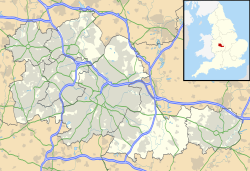| Duddeston Barracks | |
|---|---|
| Duddeston | |
 Duddeston Barracks | |
| Site information | |
| Type | Barracks |
| Owner | War Office |
| Operator | |
| Location | |
| Coordinates | 52°29′06″N1°52′44″W / 52.485°N 1.879°W |
| Site history | |
| Built | 1793 |
| Built for | War Office |
| In use | 1793–1932 |
Duddeston Barracks was a military installation in Great Brook Street, Duddeston, Birmingham, England.
